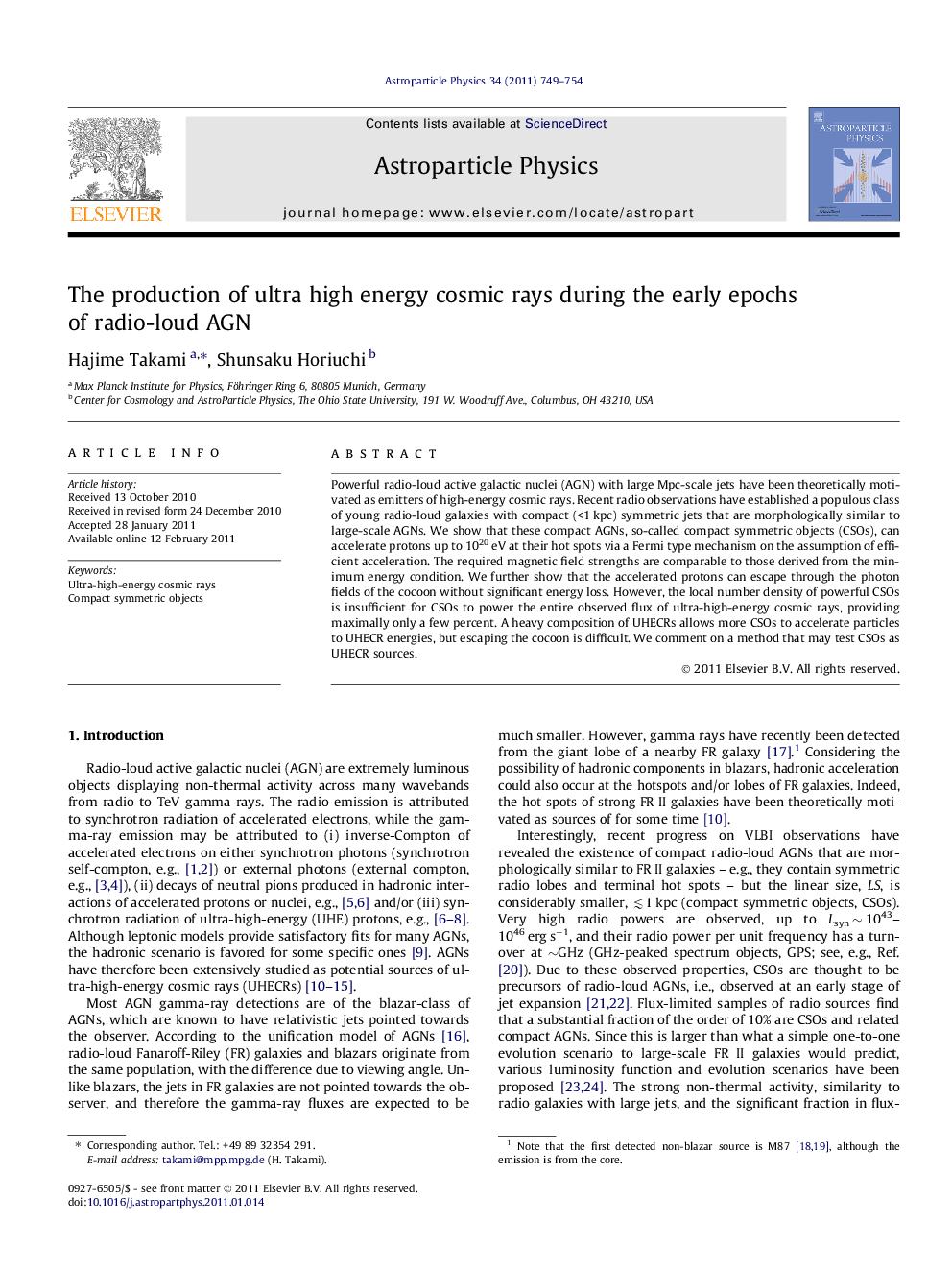| Article ID | Journal | Published Year | Pages | File Type |
|---|---|---|---|---|
| 1770999 | Astroparticle Physics | 2011 | 6 Pages |
Abstract
Powerful radio-loud active galactic nuclei (AGN) with large Mpc-scale jets have been theoretically motivated as emitters of high-energy cosmic rays. Recent radio observations have established a populous class of young radio-loud galaxies with compact (<1Â kpc) symmetric jets that are morphologically similar to large-scale AGNs. We show that these compact AGNs, so-called compact symmetric objects (CSOs), can accelerate protons up to 1020Â eV at their hot spots via a Fermi type mechanism on the assumption of efficient acceleration. The required magnetic field strengths are comparable to those derived from the minimum energy condition. We further show that the accelerated protons can escape through the photon fields of the cocoon without significant energy loss. However, the local number density of powerful CSOs is insufficient for CSOs to power the entire observed flux of ultra-high-energy cosmic rays, providing maximally only a few percent. A heavy composition of UHECRs allows more CSOs to accelerate particles to UHECR energies, but escaping the cocoon is difficult. We comment on a method that may test CSOs as UHECR sources.
Keywords
Related Topics
Physical Sciences and Engineering
Physics and Astronomy
Astronomy and Astrophysics
Authors
Hajime Takami, Shunsaku Horiuchi,
